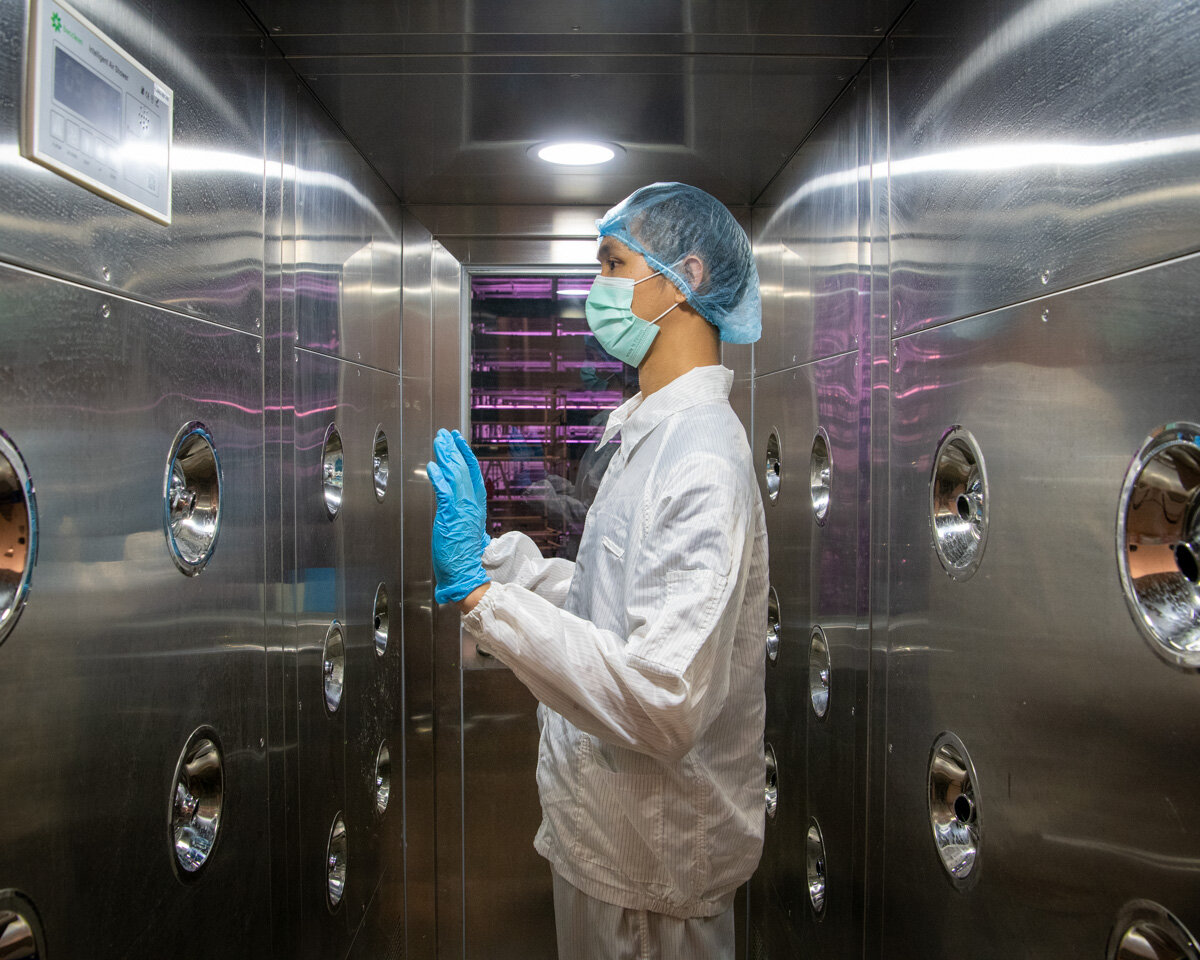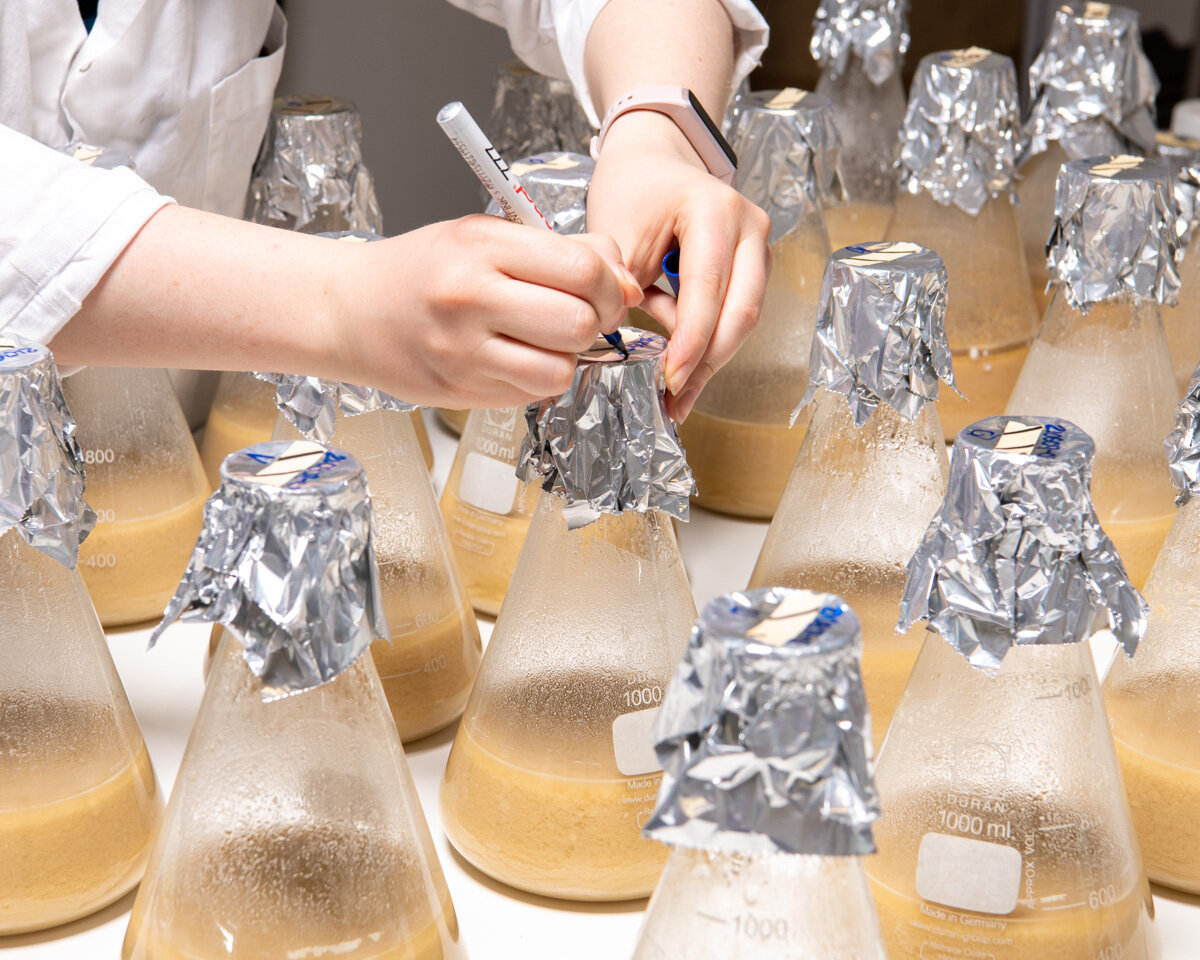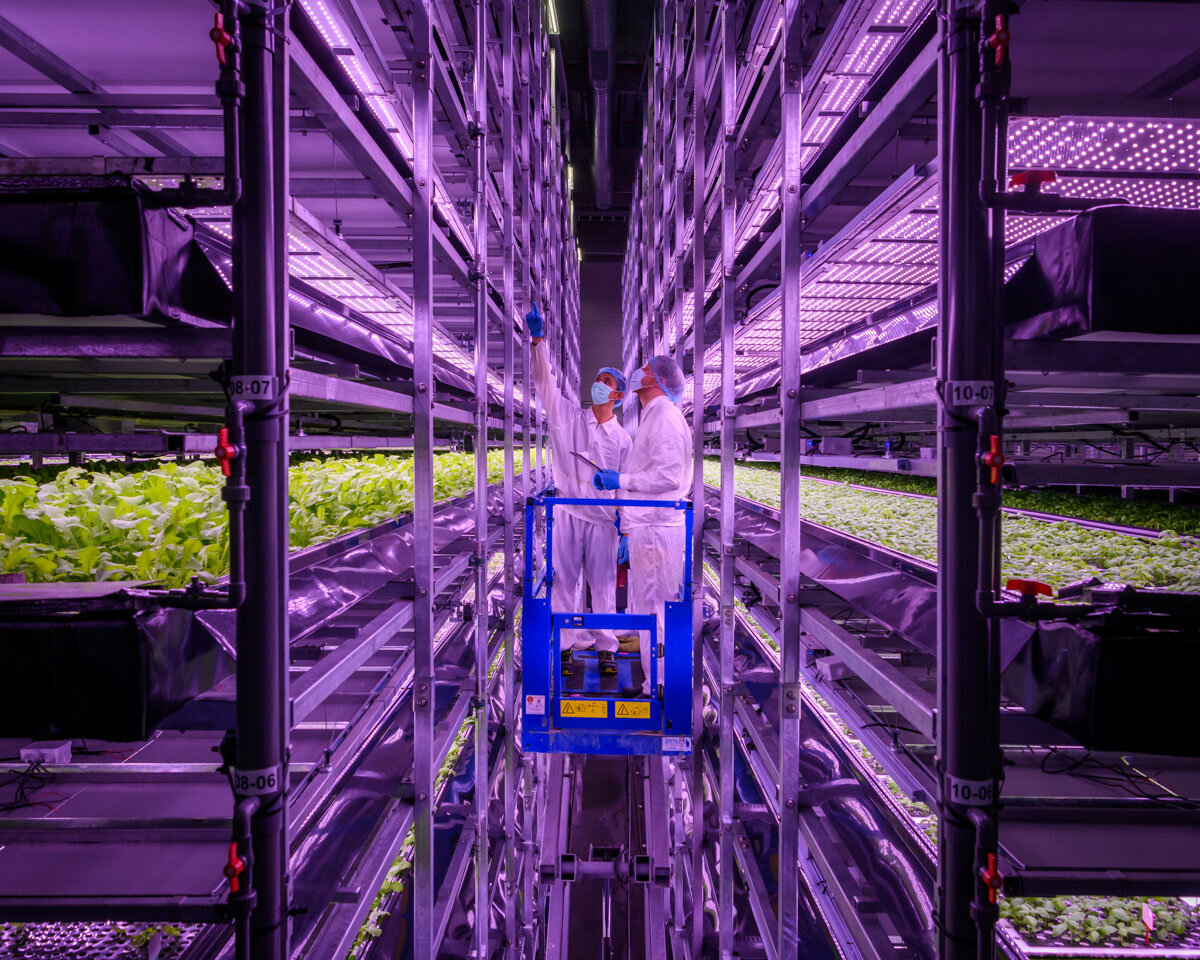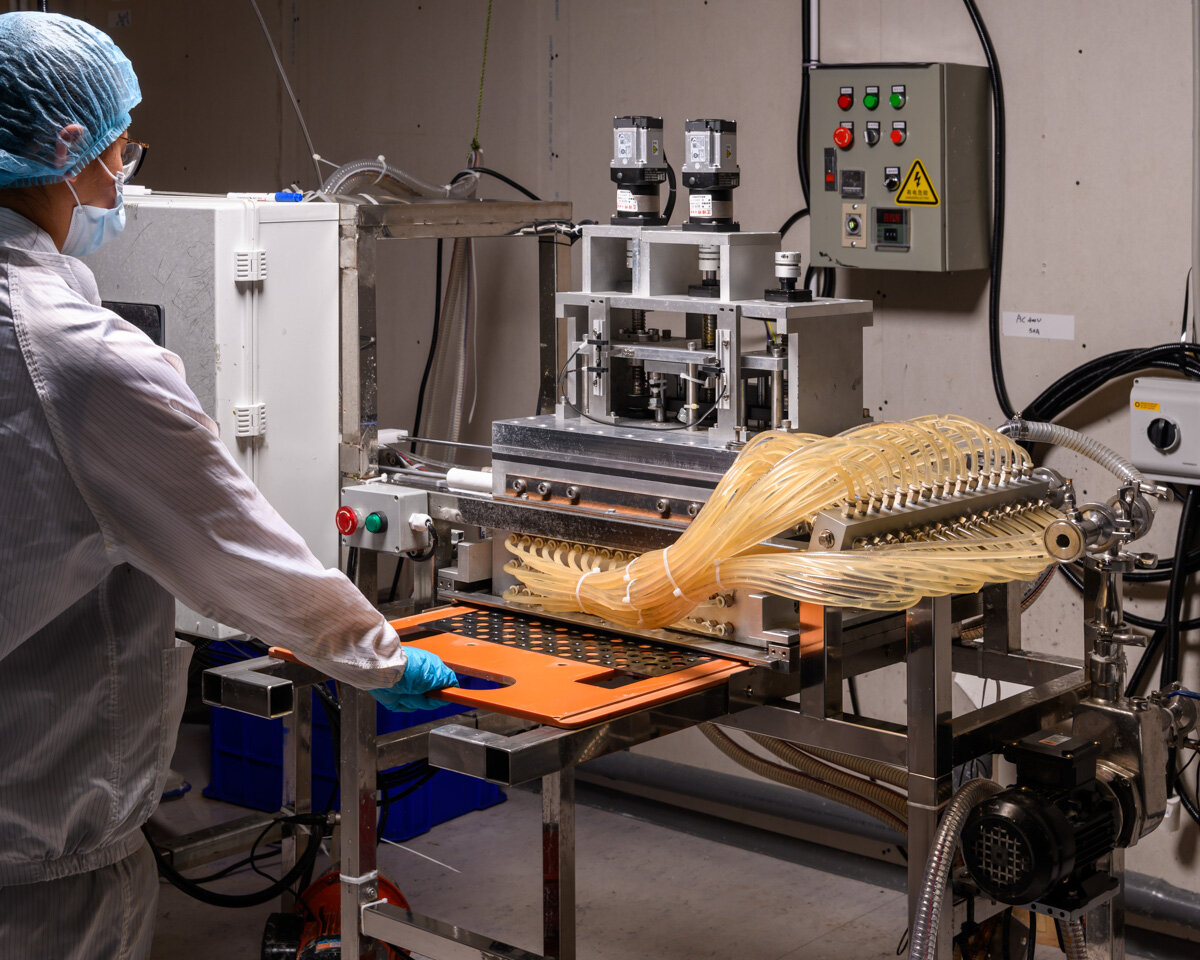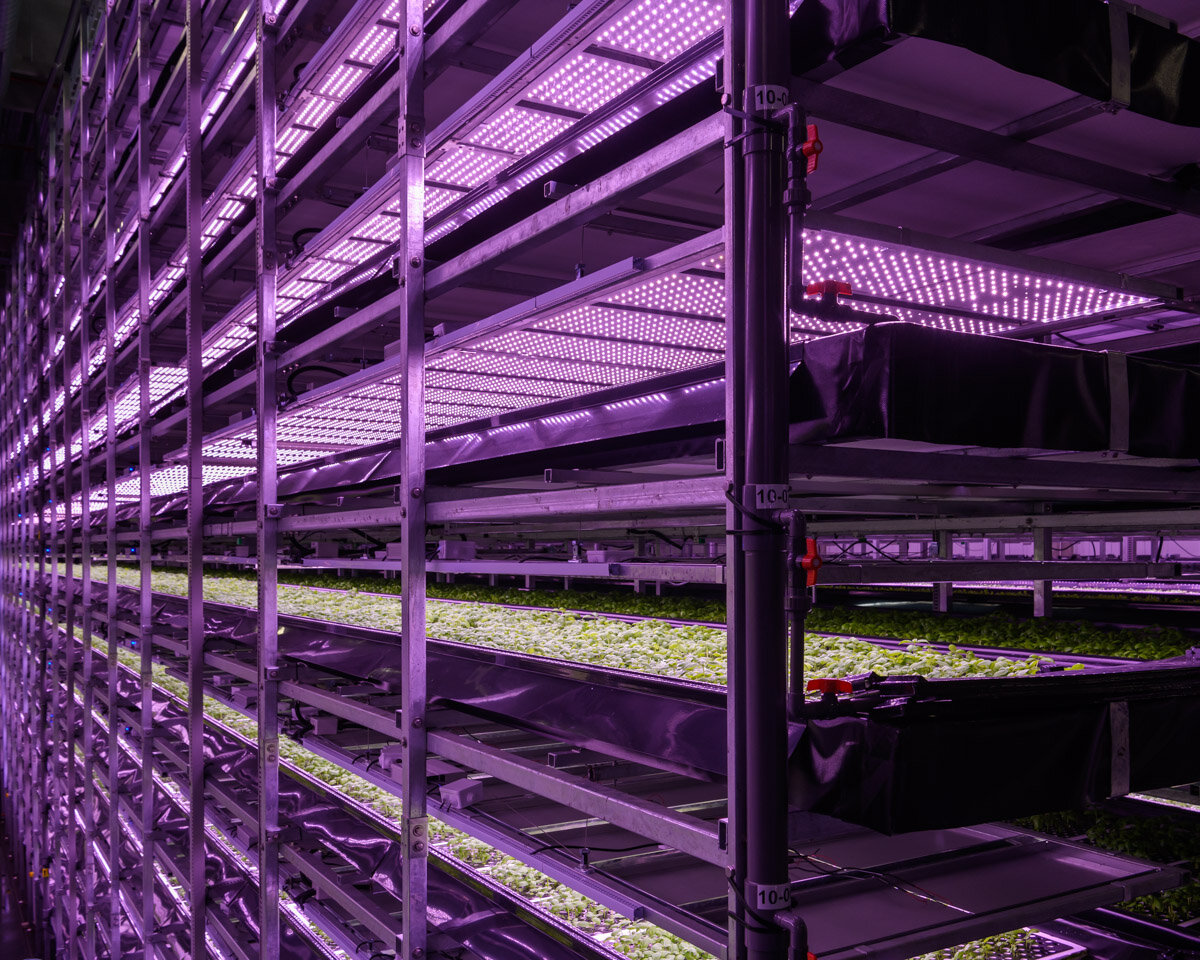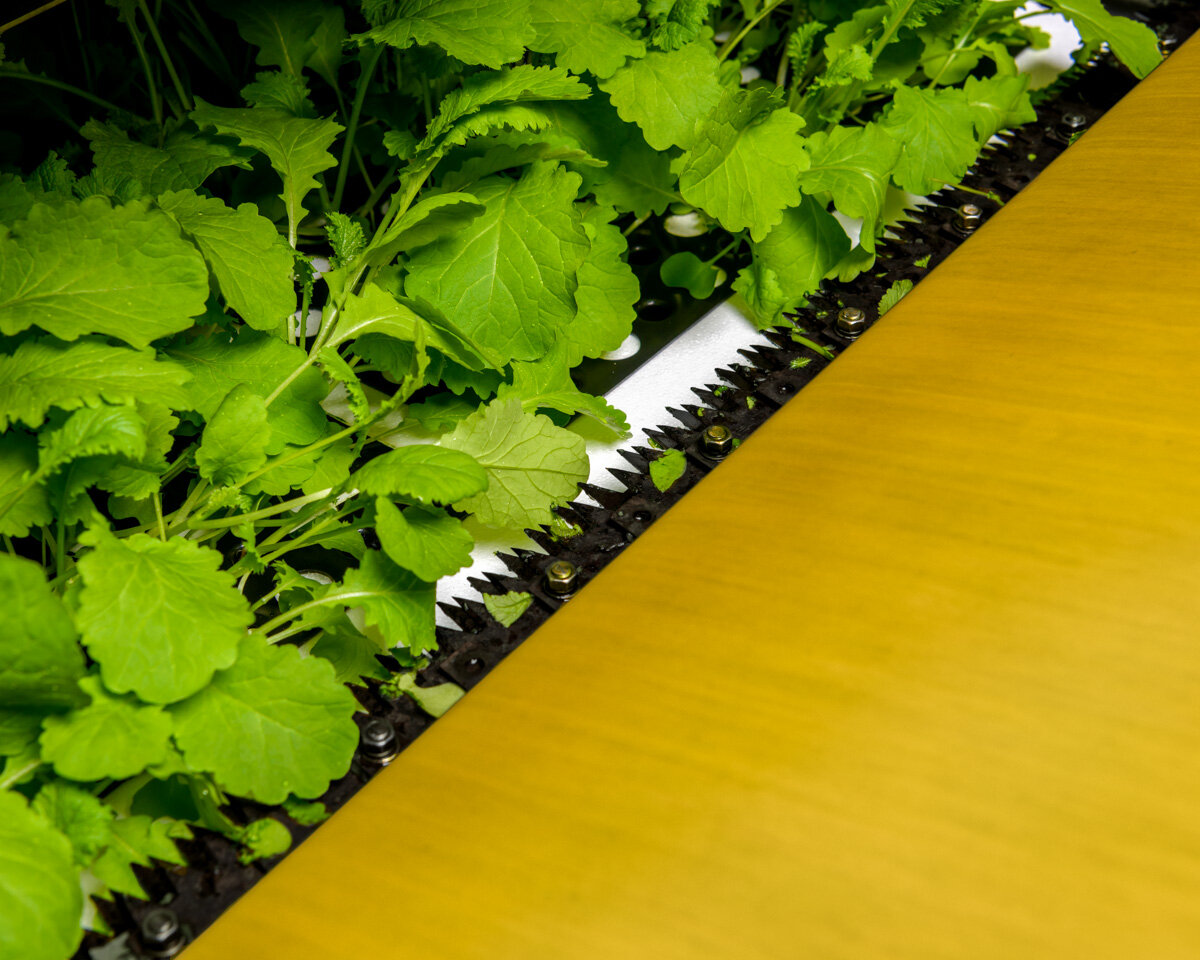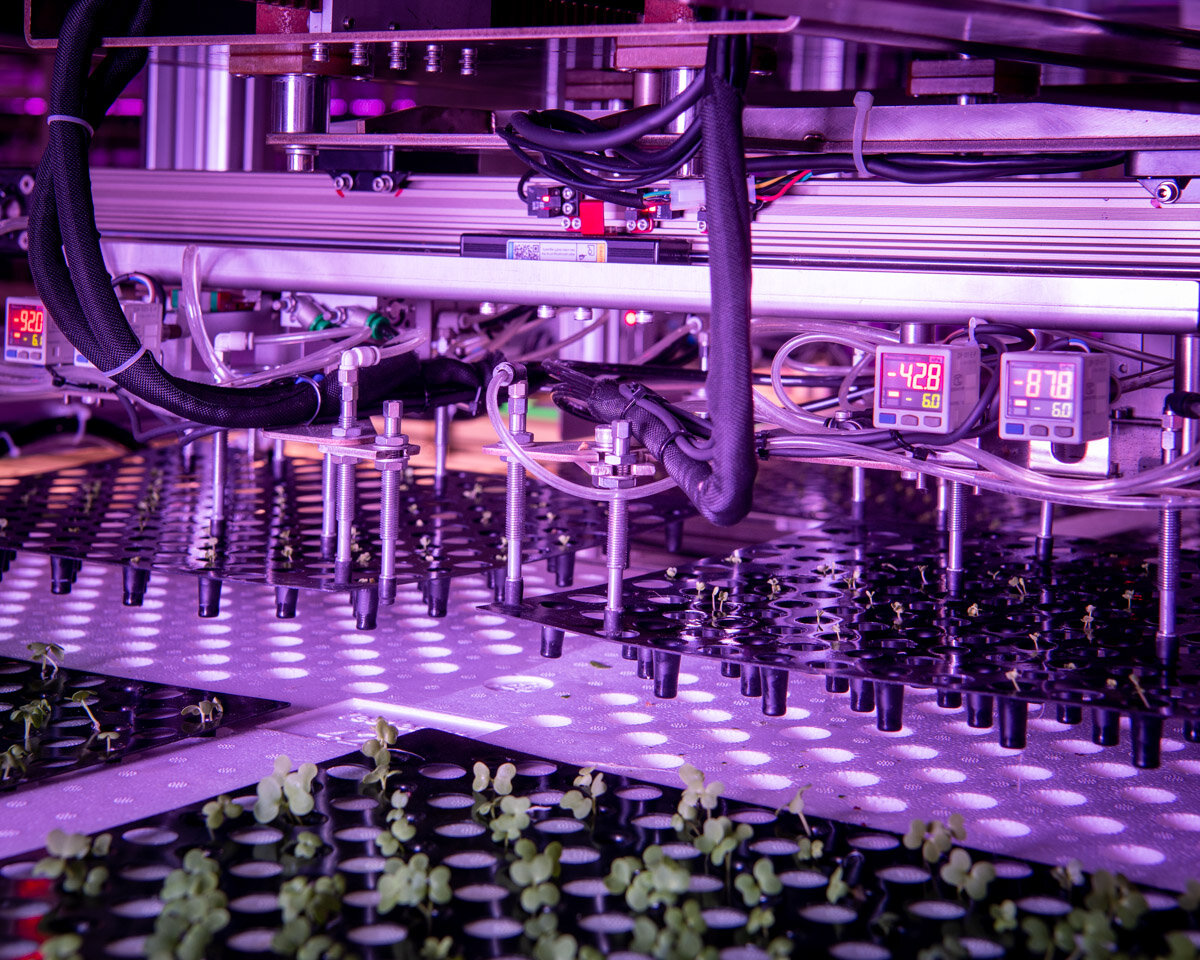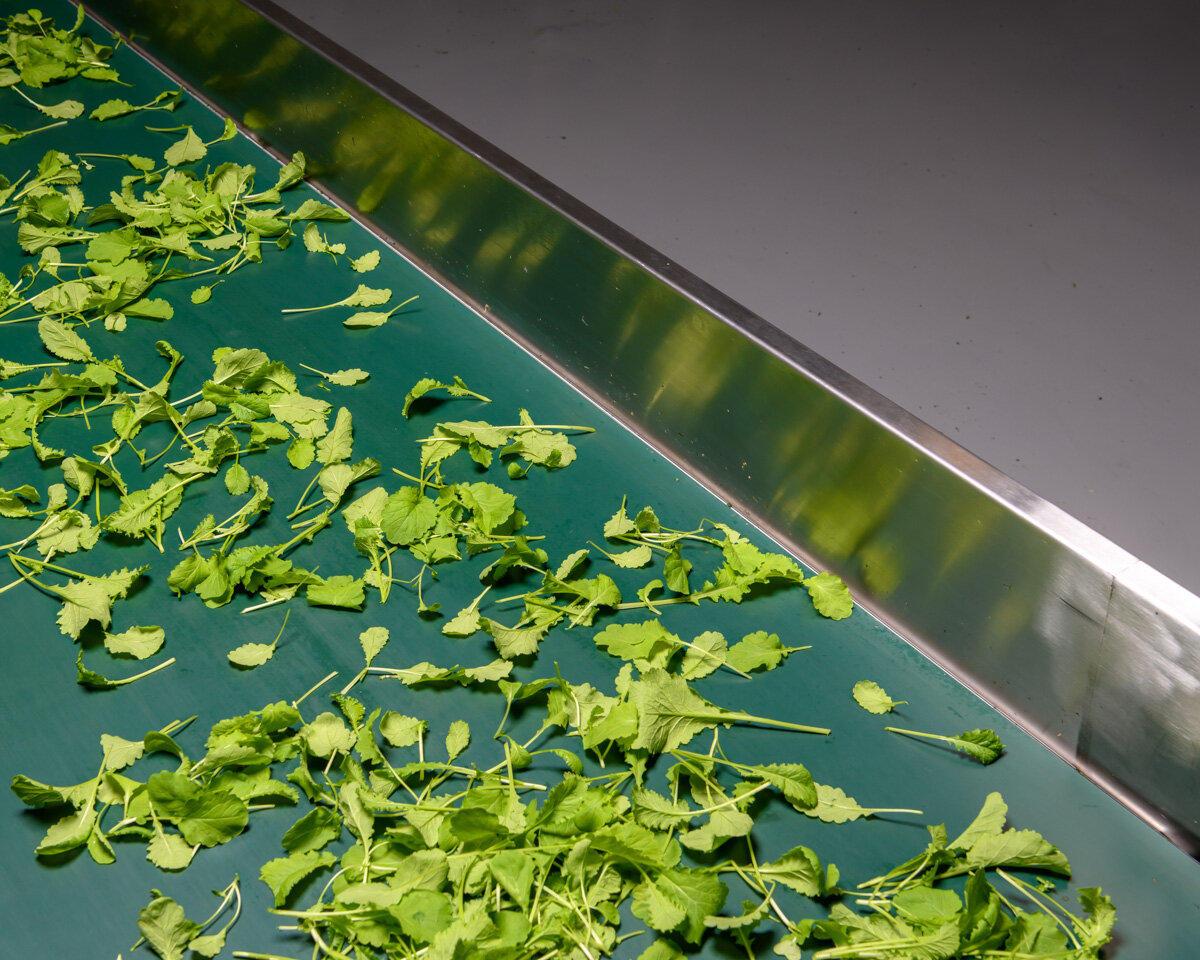In a nondescript warehouse in the outskirts of Copenhagen there is a very unusual farm. There is no sunshine, no soil, no insects, no tractors. There are some robots, a lot of water, and a whole load of pink LED light. This is Nordic Harvest.
To grow, a plant must use CO2 and light for photosynthesis, as well as nutrition and water. Out in the field, it's the sun that provides light and CO2 is found in the air. Nutrition and water draw are drawn up by the plant from the ground. But Nordic Harvest is a vertical farm, where plants are grown in a fourteen storey high hydroponic system. On the vertical farm, the plant grows in a special nutrient rich, edible gel substrate called YesBase, so called by the company that supplied the technology at the farm, YesHealth Group, a Taiwan based company specialising in vertical farming. Initially, the gel provides a firm base for growth, suspending the plant during its infancy. Then as the plant grows, the gel substrate dissolves into the water, providing some nutrition to the plant, and finally leaving it ready to eat.
The light comes from LED panels, and CO2 is added to the air in the growth hall. Nordic Harvest gets all its energy from wind turbines, and only gives light during the night when there is a surplus of energy. The only water leaving the vertical farm is found in plants, so one kilo of plant corresponds to one litre of water consumption. According to Nordic Harvest, this means up to 250 times less water consumption than on a field and up to 80 times less than in a greenhouse - and the company states that they use 250 times less space than if the plants were cultivated in a field. Because the plants grow in a closed cycle, there is no discharge of nutrients. And because the plants grow in a completely clean environment without pests, fungal spores or bacteria, pesticides and other toxic chemicals are not used. The plants are harvested automatically, without a single human hand touching them, and packaged within 10 minutes of harvesting.
Nordic Harvest states “The plant should no longer fight to pull water and nutrients out of the ground or resist wind, weather, fungi, bacteria or pests. Instead it gets exactly the amount of nutrients, water, light and CO2, it needs. You could call it a plant paradise.”
The idea of vertical farming was popularised by Dickson Despommier, professor of Public and Environmental Health at Columbia University. In 1999 he challenged his students to calculate how much food they could grow on New York’s rooftops, and this led them to the design of a 30 storey high vertical farm that could feed 50,000 people. That building has yet to materialise, but it has inspired many to take the idea of vertical farming seriously, and now vertical farms have sprung up in the US, Singapore, Italy, Taiwan and several other countries.
At the moment only high value crops - such as salad leaves and herbs - are grown in vertical farms because high yield crops like wheat can be produced so cheaply via traditional farming. But there is no doubt that vertical farming has in interesting future as traditional farming's arable land requirements are becoming too large and invasive to remain sustainable for future generations at the current rapid rate of population growth.
So how did they taste? Bloody good.
I was commissioned to photograph Nordic Harvest by YesHealth Group, a Taiwan based company specialising in vertical farming that supplied all the technology in the farm www.yeshealthgroup.com www.nordicharvest.com




